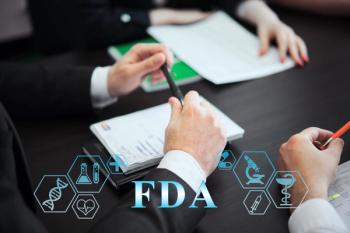
A Case for Payer Engagement and Participation in Clinical Research
Collaboration can make commercialization processes efficient and effective.
What if payers, providers, patients, and sponsors could all be excited about a new therapy that’s about to be launched? It’s possible, but making it happen requires removing many barriers between the stakeholders so that they can all collaborate in commercializing the therapy. Collaboration makes commercialization processes efficient and effective, potentially boosting a treatment’s accessibility and adoption. FDA Commissioner Robert Califf
While possible, successful and exciting commercialization projects are outliers.
- A 2023 Therapeutic Innovation & Regulatory Science2 article highlighted a big risk for biopharmaceutical companies: “In spite of time-consuming processes and high costs, the overall success rate of clinical trials is only 7.9%.”
- A 2022 Acta Pharmaceutica Sinica B article3 noted that “nine out of ten drug candidates after they have entered clinical studies would fail during phase I, II, III clinical trials and drug approval.”
If everyone shares the goal of ensuring that life-changing (and in some cases, lifesaving) treatments are accessible to patients who need them, then it’s critical for the gatekeepers of access to have a seat at the table so they can collaborate with manufacturers and build bridges with patients.
Historically, payers (i.e., commercial insurance companies and government programs) have not had a seat for actively participating in drug development, but now is the time to get them involved earlier in the process. Since we are all striving to provide life-changing and life-saving medications to patients, why not welcome more stakeholders, particularly payers, to join the development process from the start?
What if, as Dr. Califf suggested during the 2023 AHIP conference, payers made more of an effort “to help people get studies done”? Their early and transparent involvement could improve access to commercial treatments. Payers’ involvement is crucial to creating an innovative blueprint for access. Leveraging their unique expertise and capabilities could support the efficient delivery of new therapies to market.
(A quick authors’ note: While we recognize the importance of involving many stakeholders early on, in this discussion, we only examine payers and the significant part they can play in optimizing commercialization.)
Evaluating Potential Benefits of Payer Engagement in Clinical Research
The linear, sequential process of drug development silos stakeholders. Approval is sought, efficacy proven, and evidence for patient and quality of life outcomes generated before payers get involved to negotiate reimbursement. This process has a prolonged timeline that often delays patients’ access to innovative treatments and leads to suboptimal outcomes. Payers traditionally become involved near the end of the process and even then have limited input.
Involving payers earlier in the process has significant benefits:
- Transparency/Involvement in Study Design
Getting payers engaged early in the trial design process allows manufacturers to address payer concerns and preferences upfront, improving transparency and communication. Aligning secondary endpoints with payer requirements facilitates evidence generation for market access and reimbursement, impacting payer approvals. - Connections with Patients and Improved Recruitment Efficiency
Payers can discuss clinical research’s potential benefits with authority when they are involved in study design and development. Given their understanding of their member populations, payers can also help identify patients eligible for a research study. They can identify potential participants from diverse backgrounds and with target characteristics, help dispel stigmas around clinical research, and incentivize participation with, for example, premium discounts. Payers can accelerate treatment testing and distribution by encouraging members to choose to receive proactive communications about study enrollment opportunities. Efficient recruitment could benefit patients by shortening the journey of finding and receiving life-saving treatments. Payers are in a position to help patients understand their impact at every step of the process for developing improved treatments and care, which begins with clinical research. Identifying patients of interest quickly and early can make the drug development process more efficient and cost-effective. Shortening the path to life-saving or life-extending treatments is especially beneficial for late-stage patients. - Potential Multi-stakeholder Savings
Encouraging payer members to participate in clinical research can lead to cost savings for members as well as payers. A study published in JCO Oncology Practice (Effect of Clinical Trial Participation on Costs to Payers in Metastatic Non–Small-Cell Lung Cancer4) found significant cost savings for payers when patients participated in clinical trials: “[second line] 2L clinical trial participation in patients with metastatic NSCLC is associated with a mean cost savings of $6,663 PPPM and a mean savings of $45,308 per patient for the duration of 2L trial therapy to health care payers. Although this is a retrospective single-institution study, these data provide an updated analysis of the costs of trial participation in an evolving oncology treatment landscape. If our results hold in larger confirmatory studies, health care payers should have a financial incentive to improve clinical trial access and enrollment.” - Competitive Differentiation
Facilitating participation in research can be another service payers provide their members, similar to mental health or weight reduction programs. Payers can provide premium discounts for members open to participating in clinical research. What if stakeholders saw such offerings as differentiators in a growing competitive marketplace?
Many Ways to Shift the Access Blueprint Toward New Care Standards
Given payers’ significant role in paying for administered care and treatments, involving and engaging with them early in the clinical research process could help develop more effective drugs. Those drugs could in turn improve patients’ quality of life and health. They could also save patients from cycling through suboptimal treatments and help establish new standards of care tailored to patients’ needs.
Crucially, payers can forge a connective bridge with patients who are the farthest away, at the end of the journey. Understanding how they can contribute at each step toward proper care and medicine, starting with clinical research, would empower patients with a sense of control and opportunity to help future patients.
A shorter, more efficient development process benefits all stakeholders; it reduces costs, enhances treatments, and improves quality of life.
Doug Fulling is the president of Precision AQ. Andrew Cournoyer is senior vice president and director of the access experience team at Precision AQ.
Sources
- Wilkerson, John. Califf Criticizes Insurers for Doing too Little on Drug Research. Stat. March 16, 2023. https://www.statnews.com/2023/03/16/califf-insurers-fda/
- Factors Affecting Success of New Drug Clinical Trials. National Library of Medicine. May 11, 2023. https://www.ncbi.nlm.nih.gov/pmc/articles/PMC10173933/
- Why 90% of Clinical Drug Development Fails and How to Improve It? National Library of Medicine. July 12, 2022. https://www.ncbi.nlm.nih.gov/pmc/articles/PMC9293739/
- Effect of Clinical Trial Participation on Costs to Payers in Metastatic Non-Small-Cell Lung Cancer. PubMed Central. August 10, 2021. https://www.ncbi.nlm.nih.gov/pmc/articles/PMC8360452/
Newsletter
Lead with insight with the Pharmaceutical Executive newsletter, featuring strategic analysis, leadership trends, and market intelligence for biopharma decision-makers.





